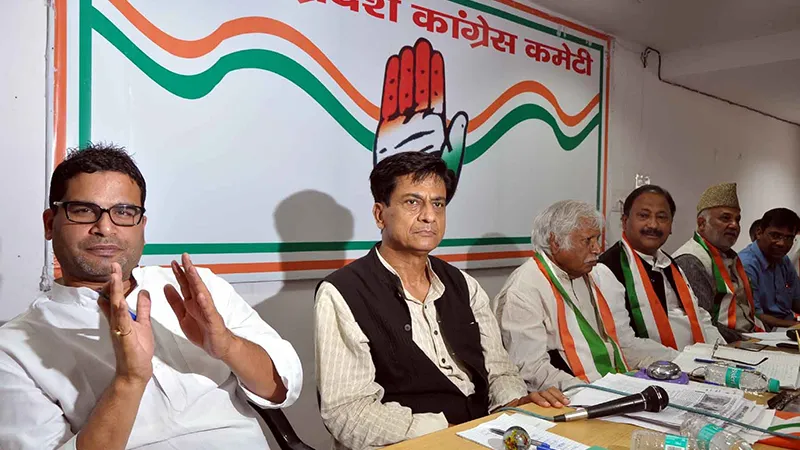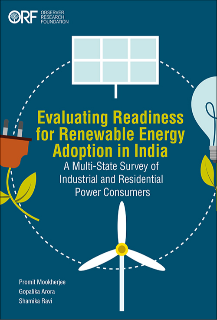Now working with the Congress, Prashant Kishore, the election strategist who was part of the Narendra Modi campaign in 2014 and the Nitish Kumar mission in Bihar in 2015, is focusing on Uttar Pradesh. His plan is to revive the party in India’s biggest State, in terms of population and Lok Sabha seats. From an impressive 21 seats (out of 80 seats) in 2009, the Congress fell to merely two seats in 2014. Only Congress president Sonia Gandhi (Rae Bareli) and Congress vice president Rahul Gandhi (Amethi) managed to win.
Rahul Gandhi was given a spirited fight by Smriti Irani of the Bharatiya Janata Party, who has been visiting the constituency over and over again after her defeat and looks set to lock in the Congress vice president in 2019. In State Assembly elections, the Congress has been a no-hoper, consistently finishing a poor fourth among the four major parties in the State. In the 2012 Assembly election, Rahul Gandhi campaigned for many months and even sought to build an OBC constituency for the Congress — which has historically depended on Brahmins and upper caste groups as well as Dalits and Muslims in the State. It was all to no avail and the Congress scion was humiliated.
Why should it be different in 2017, when Uttar Pradesh sees its next election? It would appear that the major battle will be between the two regional parties, Mayawati’s Bahujan Samaj Party and Mulayam Singh Yadav’s Samajwadi Party, now in Government. The BJP, organisationally weak in the State, hopes a new local unit president and a shake-up in the State party, along with the supportive role of the Rashtriya Swayamsevak Sangh network — which was so critical in 2014 — will help revive the party and bring it back on rails, even if not to power immediately.
For the Congress, Kishore has proposed a blockbuster initiative: Making Priyanka Gandhi the party’s candidate for Chief Minister. This is a high-risk, potentially high-outcome idea. In the 19th century, there was a movement for “heroic medicine” in Europe. It entailed taking risky steps that could cure immediately but also potentially threaten a patient’s well-being: Cure or kill, to use shorthand. The Priyanka Gandhi option is the political equivalent of ‘heroic medicine’ for the Congress.
What could be the underlying logic? Uttar Pradesh is a polity comprising several community and caste groups and each electoral victor in recent years has had to weld a successful coalition. If one segment is brought on board, it is easier to appeal to other segments and groups. Without that first group, of course, there is a viability problem. In recent years in the State, the BSP, the SP and even the BJP have begun with a base vote. The Congress does not have a single demographic unit that is loyal to it. It has no core vote around which to gather the incremental vote; its loyal vote is ageing and voting from memory.
Kishore’s calculation could be that bringing a Nehru-Gandhi family member, especially an untested one such as Priyanka Gandhi, would be the tonic to attract a certain quantum of Brahmin voters and Muslims. This will bring the Congress into contention and from then on a sustained and sharp-focused election campaign could draw in urban voters from the many towns of Uttar Pradesh and other floating members of the electorate.
In theory, this is a fair assessment. In 1999, it took a short burst from Priyanka Gandhi to snatch the Brahmin vote from the BJP in Amethi. This reduced Arun Nehru (then the BJP candidate) from an obvious front-runner to fourth place. Precisely the same mechanism, of using a Nehru-Gandhi family member as chief ministerial nominee, had been speculated upon in 2007, with Rahul Gandhi suggested for the role.
Can all this hold true today? There are several factors and caveats that need to be considered here. Much water has flown down the Gangetic plains since 1999 or even 2007. The freshness and untested nature of the Nehru-Gandhi siblings has given way to a degree of listlessness and fatigue, if not ridicule and downright hostility. Younger voters have no memories of Atal Bihari Vajpayee’s Government, let alone of the peak of the Nehru-Gandhi dynasty and of Indira and Rajiv Gandhi. After the UPA years, and following a series of start-stop political attempts, Rahul Gandhi can no longer be sold as an innocent newcomer, untainted by office and power.
While his sister has been outside formal politics, some of the UPA era’s power overhang would have affected her too. True, if she becomes a chief ministerial candidate she will take away a lot of attention, if nothing else. Yet, she could also draw attention to her husband, and how that will play out is another story. More than that, the Nehru-Gandhi template of all or nothing, of making its members either Prime Minister or take no position, will need to be revised if Priyanka Gandhi is to present herself as chief ministerial hopeful. This may seem a small matter for most politicians; in the self-created and self-serving mythology of the Nehru-Gandhi universe it amounts to an astral explosion.
Presume Kishore’s counsel is heeded and the experiment is taken up. What next? Let us take a generous view and decide that Priyanka Gandhi will be a rousing campaigner and move the Congress to 100-125 seats (in a State Assembly of 403). Do note that even these numbers seem absolute fantasy at the moment, but let us just believe they will occur. At this stage, there will be a surge in the Congress to scale up the Priyanka model and expand it to the rest of the country, to promote her to a national role and junk Rahul Gandhi. How the family will cope with that, remains a piquant question.
Alternatively, what if the Priyanka project falls flat and she, like her brother in 2012, cannot lift the Congress beyond the 25-30 seat trap. In that situation, the Congress would have exhausted its self-proclaimed brahmastra (weapon of last resort). It will need to prepare for the 2019 general election with a brother vanquished in 2012 and 2014 and a sister vanquished in 2017. After that, would anything matter?
This commentary originally appeared in The Pioneer.
The views expressed above belong to the author(s). ORF research and analyses now available on Telegram! Click here to access our curated content — blogs, longforms and interviews.




 PREV
PREV


